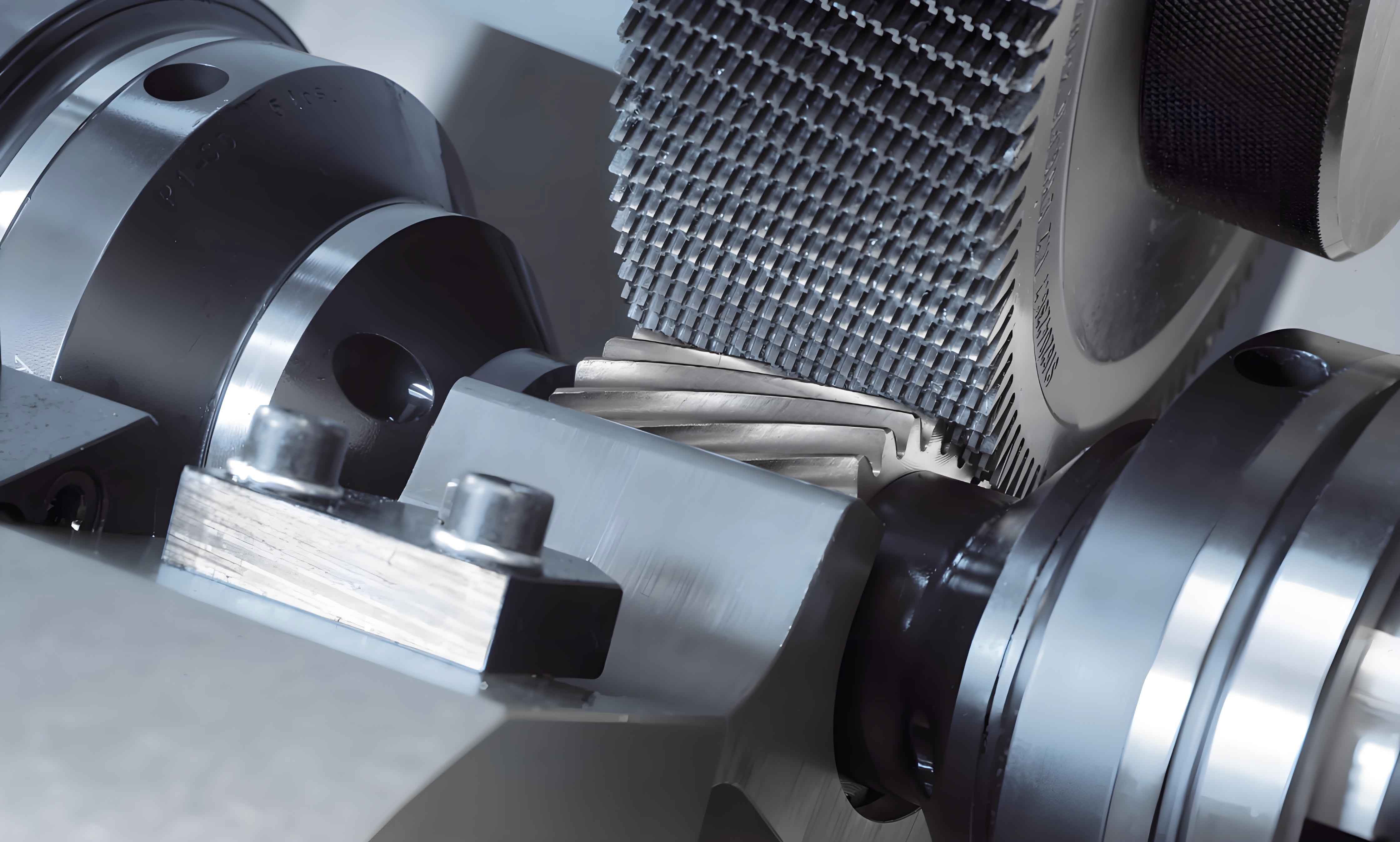Abstract:
To enhance the prediction capability of tooth profile concave errors in gear shaving, a multi-source coupled prediction model is proposed, taking the axial gear shaving method as an example. This model considers installation errors and couples factors such as shaving tooth contact ratio and machine tool movement. By analyzing the impact of installation errors on gear shaving processes, the model reveals the mechanisms and enables quantitative prediction of tooth profile concave errors.

1. Introduction
Gear shaving is a critical finishing process in gear manufacturing, but tooth profile concave errors are common issues that affect gear performance, causing vibrations, noise, and shortened gear lifespans. Researchers have explored various factors contributing to these errors, including load distribution, contact deformation, and cutting forces. However, single-factor studies are insufficient to fully understand and predict these errors. Therefore, a multi-source coupled analysis is essential.
2. Literature Review
Previous studies have analyzed tooth profile concave errors from different perspectives:
- Hsu et al. investigated the influence of radial gear shaving on tooth surface errors by analyzing shaving contact states.
- Cai et al. used Load Tooth Contact Analysis (LTCA) to study error formation mechanisms, emphasizing plastic deformation at meshing points.
- Yao et al. analyzed relative sliding speeds and induced curvature to conclude that excessive shaving at the pitch circle causes concave errors.
- Other studies considered installation errors and their impact on tooth surface errors, proposing methods to improve gear installation accuracy.
However, these studies primarily focused on single factors, lacking a comprehensive multi-source coupled analysis.
3. Methodology
3.1 Establishment of Gear Shaving Analysis Model
To comprehensively analyze the impact of all factors, this study establishes a gear shaving analysis model incorporating installation errors, relative sliding speeds, induced curvature, and back engagement. The model is formulated as follows:
(Mathematical formulations and equations related to gear geometry, shaving principles, and error analysis are provided here, but due to space constraints, only key concepts are outlined.)
This model lays the foundation for multi-factor coupling analysis in gear shaving.
3.2 Single Cutting Area Concept
Factors such as contact ratio, installation errors, and machine tool movement significantly affect tooth profile concave errors. By coupling these factors into a single cutting area at the meshing point, we can study their combined influence on concave errors.
- Single Cutting Area Model: Based on shaving principles, the single cutting area refers to the area removed from the tooth profile’s side surface during each cutting cycle at a meshing point. The model considers three contact states: initial contact, maximum back engagement, and end contact.
3.3 Prediction Model for Tooth Profile Concave Errors
Using the maximum and minimum values of the single cutting area and the corresponding tooth profile unfolding angle as input parameters, a prediction model for tooth profile concave errors is established using a Genetic Algorithm-improved BP Neural Network (GA-BP).
- GA-BP Neural Network: Genetic algorithms optimize the initial weights and thresholds of the BP neural network, enhancing its prediction accuracy.
4. Model Validation
4.1 Experimental Setup
To validate the model, experiments were conducted using a small modulus gear with specific parameters (tooth number = 17, modulus = 4.2333, pressure angle = 20°, modification coefficient = 0.0468) and four sets of shaving cutters with different contact ratios. Installation errors were simulated by fine-tuning machine parameters.
4.2 Measurement and Prediction Results
Twenty-four sets of parameters were tested, with 14 sets used for training the prediction model and 10 for validation. The prediction errors are summarized in Table 2.
Table 2: Comparison of Simulation Predictions and Measured Values
| Sample | Measured Error (μm) | Predicted Error (μm) | Error Rate (%) |
|---|---|---|---|
| 1 | … | … | … |
| … | … | … | … |
| 10 | … | … | … |
The maximum prediction error was 9.35%, with an average error of 6.93% for the concave error values and 2.19% for the center positions.
5. Analysis of Single Cutting Area on Concave Errors
5.1 Influence of Single Cutting Area
The relationship between the single cutting area and tooth profile concave errors was analyzed. the concave error increases with the single cutting area but decreases after a certain threshold.
This suggests that excessive cutting is the primary cause of tooth profile concave errors. The curve has a maximum point where the concave error is largest, indicating that shaving parameters should avoid this point.
5.2 Center Position of Concave Errors
The center position of the concave error coincides with the location of the maximum single cutting area, gradually shifting towards the tooth tip as the single cutting area increases.
6. Conclusions
- New Method for Multi-factor Coupling Analysis: This study established a gear shaving analysis model considering installation errors, relative sliding speeds, induced curvature, and back engagement. By coupling these factors into a single cutting area, it provides a novel approach for multi-factor coupling analysis in gear shaving.
- High Prediction Accuracy: The GA-BP neural network-based prediction model achieved an average prediction error of 6.93% for concave error values and 2.19% for center positions, validating its feasibility and accuracy.
- Practical Implications: The findings highlight the importance of controlling the single cutting area to minimize tooth profile concave errors, guiding the optimization of shaving parameters and processes.
